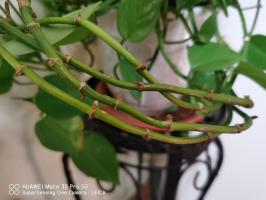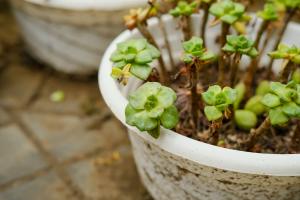How to Keep Slugs from Eating Tomato Plants
Slugs can be a major nuisance when it comes to growing tomato plants. These slimy creatures can quickly devour the leaves and fruits of your tomato plants, leaving you with a disappointing harvest. Fortunately, there are several measures you can take to keep slugs at bay and protect your tomato plants.
1. Use Slug Traps
One effective way to control slugs is to use slug traps. These are small containers filled with beer, which attracts and drowns the slugs. Simply dig a small hole in the soil around your tomato plants and bury the container so that the rim is level with the soil surface. Repeat the process for several traps and distribute them evenly around your garden. Be sure to empty and refill the traps every few days to maintain their effectiveness.
2. Create Barriers
You can also create physical barriers to keep slugs away from your tomato plants. One simple way is to surround each plant with a ring of coarse materials such as gravel, diatomaceous earth or crushed eggshells. These materials create a rough and sharp surface that slugs find difficult to crawl over. Another option is to use copper tape or strips around the base of your plants. Copper reacts with the slime of slugs, producing an unpleasant electric shock that repels them.
3. Provide Natural Predators
Encouraging natural predators of slugs can be a long-term solution to your slug problem. To attract predators such as birds, hedgehogs, and frogs, create a diverse and naturalistic garden environment with plenty of vegetation and shady spots. You can also introduce some carnivorous insects such as ground beetles and centipedes, which are known to feed on slugs. Be careful, however, not to introduce invasive species that could harm your garden ecosystem.
4. Limit Moisture
Slugs need moisture and humidity to survive, so limiting this can make a big difference in deterring them from your tomato plants. Water the soil around your tomato plants in the morning, allowing time for the surface to dry out during the day. Avoid watering in the evening or at night, as this creates a damp environment that attracts slugs. You can also improve drainage in your soil by adding organic matter, such as compost or leaf mold, which helps to aerate the soil and keep it dry.
5. Choose Slug-Resistant Varieties
If you want to avoid the hassle of slug control altogether, you can choose tomato plant varieties that are less attractive to slugs. Look for varieties that have tough or hairy leaves, such as San Marzano or Mortgage Lifter, as these are less appetizing to slugs. You can also select varieties that produce fruit that ripens earlier in the season, as slugs tend to be more active in later summer and fall.
By taking these measures, you can protect your tomato plants from slugs and enjoy a bountiful harvest. Remember to monitor your garden regularly for signs of slug damage and adjust your control methods as needed.

 how many times do yo...
how many times do yo... how many planted tre...
how many planted tre... how many pine trees ...
how many pine trees ... how many pecan trees...
how many pecan trees... how many plants comp...
how many plants comp... how many plants can ...
how many plants can ... how many plants and ...
how many plants and ... how many pepper plan...
how many pepper plan...






























